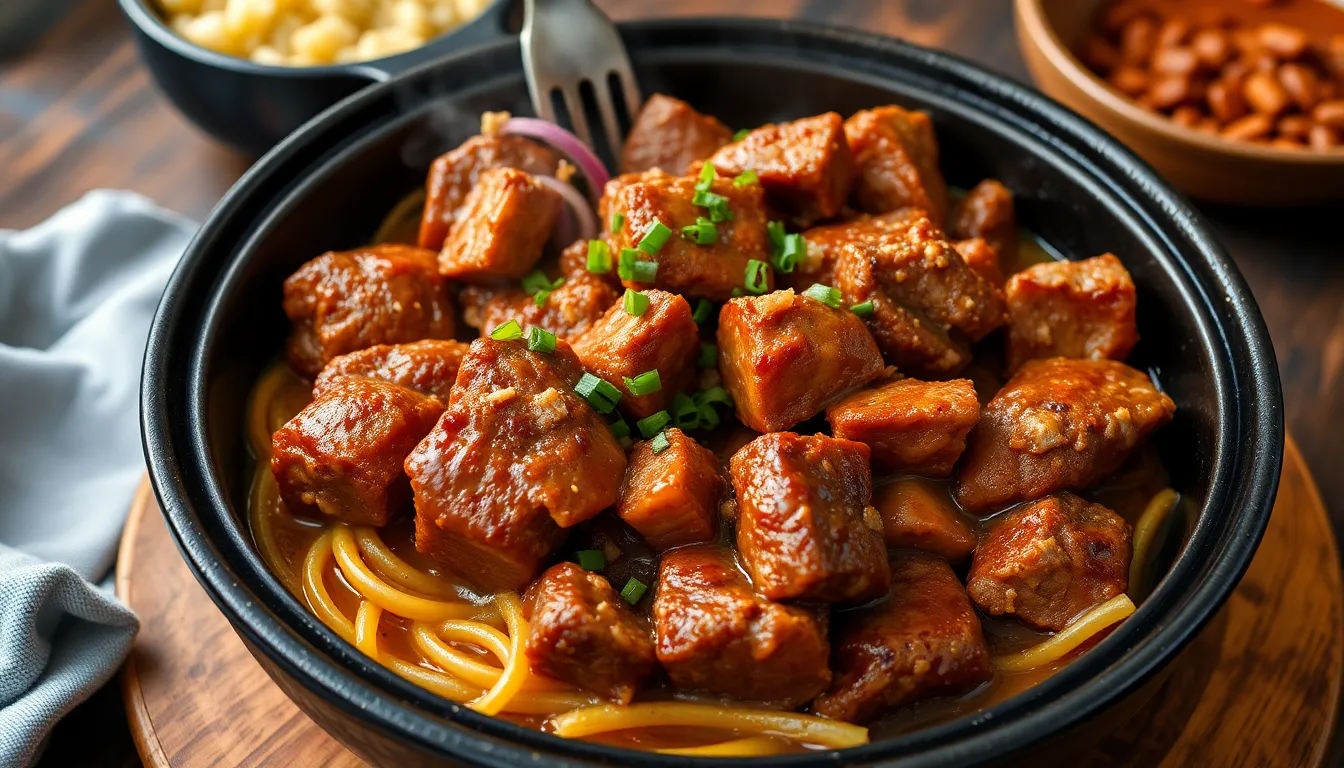A Carnivore’s Guide to Meal Prep: How to Cook Meat for the Week
Introduction: Embracing the Carnivore Lifestyle
The carnivore diet, a bold and unique approach to nutrition, emphasizes the consumption of animal products while eliminating plant-based foods. Advocates of this diet often report numerous benefits, including increased energy levels, improved mental clarity, and enhanced muscle recovery. However, for busy individuals, sticking to a carnivore lifestyle can prove challenging, especially when it comes to meal preparation.
This article serves as a comprehensive guide to help you master meal prepping for the week, ensuring you have delicious and nutritious meat-based meals ready to go at a moment’s notice. From stocking your pantry with the right meats to mastering cooking techniques and planning your weekly menu, we’ll equip you with everything you need to succeed in your carnivore journey.
Section 1: The Carnivore Pantry – Stocking Up on Essentials
1.1 The Meat Selection
When embarking on a carnivore diet, the first step is to curate a selection of high-quality meats. Here are some types of meat to consider for your meal prep:
- Beef: Opt for grass-fed cuts for higher omega-3 fatty acids.
- Pork: Look for pasture-raised varieties, which are often richer in flavor.
- Chicken: Organic, free-range chicken is typically more nutritious and flavorful.
- Lamb: A delicious option packed with healthy fats and protein.
- Fish: Fatty fish like salmon provide essential omega-3s.
When choosing meat, prioritize high-quality sources such as local farms or butcher shops that offer organic and sustainably-raised options. This not only supports ethical practices but also enhances your meal prep experience with superior taste and nutrition.
1.2 Essential Cooking Tools
Having the right kitchen tools can significantly streamline your meat preparation process. Here’s a list of must-have items:
- Chef’s Knife: A sharp, versatile knife is crucial for cutting and portioning meat.
- Cutting Board: A sturdy board provides a safe surface for chopping and preparing your meats.
- Meat Thermometer: Ensures that your meats are cooked to the perfect temperature every time.
- Slow Cooker: Ideal for hands-off cooking, particularly for tough cuts of meat.
- Cast Iron Skillet: Perfect for searing and finishing meats in the oven.
- Vacuum Sealer: Keeps your meats fresh and prevents freezer burn when storing leftovers.
Section 2: Mastering the Art of Meat Cooking
2.1 Cooking Techniques to Elevate Your Meals
Understanding various cooking techniques can elevate your meals and enhance the flavors of your ingredients. Here’s a breakdown of popular methods:
| Cooking Technique | Pros | Cons |
|---|---|---|
| Grilling | Imparts a smoky flavor, quick cooking times | Requires attention to prevent overcooking |
| Roasting | Great for large cuts, enhances flavor | Can take longer than other methods |
| Sous-Vide | Precision cooking, retains moisture | Requires special equipment, longer prep time |
| Slow-Cooking | Tenderizes tough cuts, convenient | Long cooking times, may not suit all meats |
2.2 Flavoring Your Meats Without Compromise
While the carnivore diet emphasizes meat, flavor is still an essential component of enjoyable meals. Here are some spices and marinades that align with carnivore principles:
- Salt: Enhances the natural flavors of meat.
- Pepper: Adds a subtle heat without overpowering.
- Garlic Powder: Provides depth and richness.
- Onion Powder: Offers a sweet, savory note.
- Herbs: Consider thyme, rosemary, and oregano for aromatic profiles.
To enhance flavor while staying within diet guidelines, marinate meats with olive oil and your choice of seasonings, allowing them to absorb flavors before cooking.
Section 3: Meal Prep Basics – The How-To
3.1 Planning Your Weekly Menu
Planning is crucial for effective meal prep. Below is a sample meal prep schedule for one week, including various meats and cooking methods:
| Day | Meat Type | Cooking Method | Serving Style |
|---|---|---|---|
| Monday | Beef | Grilled | Steak Salad |
| Tuesday | Pork | Slow-Cooked | Pulled Pork Tacos |
| Wednesday | Chicken | Roasted | Herb-Roasted Chicken |
| Thursday | Lamb | Sous-Vide | Lamb Chops with Garlic |
| Friday | Beef | Grilled | Beef Kebabs |
| Saturday | Fish | Baked | Herb-Crusted Salmon |
| Sunday | Pork | Grilled | Pork Chops with Sautéed Greens |
3.2 Batch Cooking: Time-Saving Strategies
Batch cooking is an effective strategy for busy carnivores. Here are some tips for cooking large portions efficiently:
- Cook in Bulk: Prepare larger cuts of meat to serve multiple meals.
- Use Freezer-Friendly Recipes: Choose recipes that freeze well for easy storage.
- Storage Techniques: Use airtight containers or vacuum seal bags to maintain freshness.
- Label and Date: Keep track of what you’ve frozen by labeling containers.
By preparing a week’s worth of meals in one go, you’ll save time while ensuring that you remain committed to your carnivorous way of life.
Conclusion: A Delicious Path to Carnivore Success
With the right approach to meal prep, embracing a carnivore lifestyle can be both enjoyable and sustainable. From selecting the finest cuts of meat to mastering cooking techniques and batch cooking, you can ensure that your meals are not only nutritious but also bursting with flavor. Remember, the key to success lies in planning, preparation, and a passion for the wonderful world of meat. Happy cooking!




